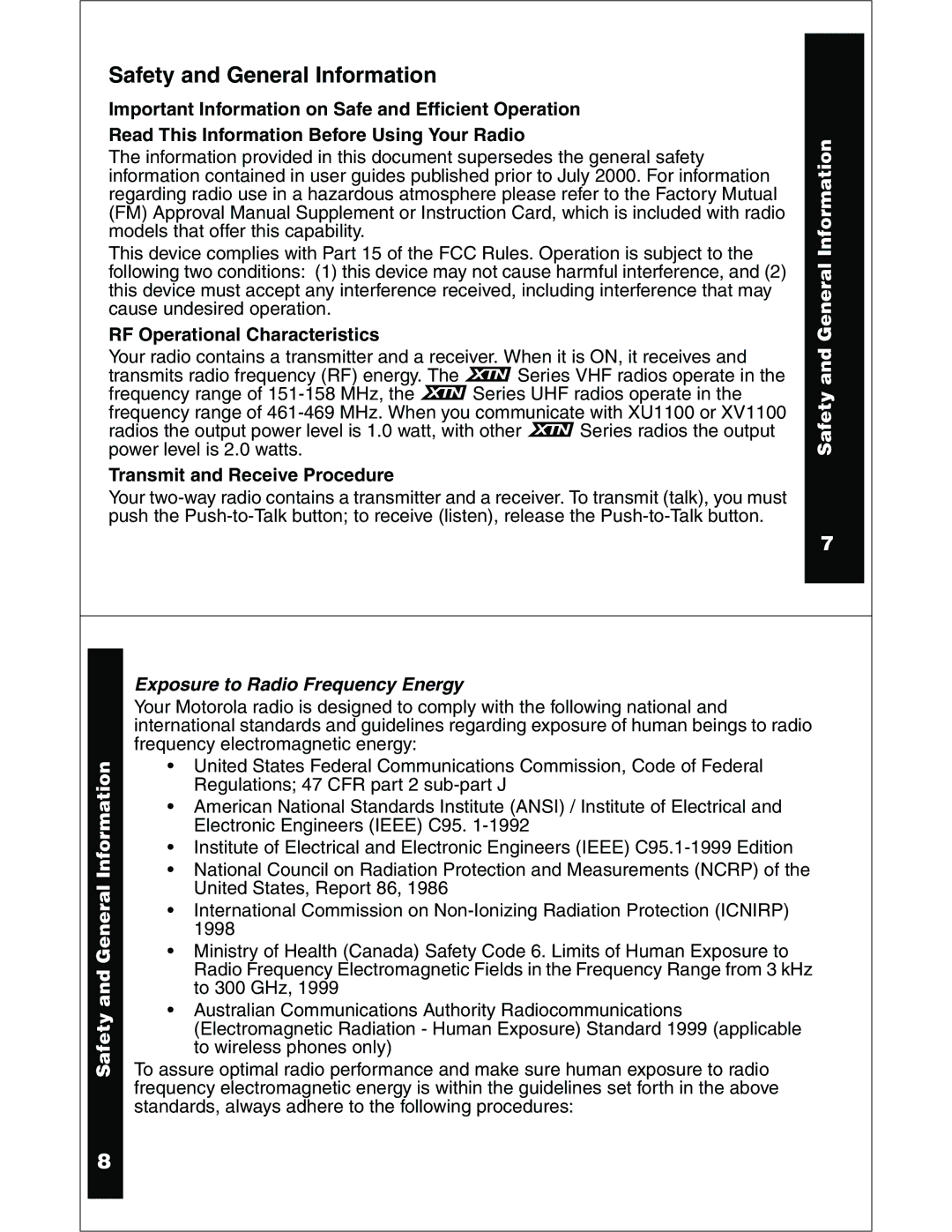
Safety and General Information
Important Information on Safe and Efficient Operation
Read This Information Before Using Your Radio
The information provided in this document supersedes the general safety information contained in user guides published prior to July 2000. For information regarding radio use in a hazardous atmosphere please refer to the Factory Mutual (FM) Approval Manual Supplement or Instruction Card, which is included with radio models that offer this capability.
This device complies with Part 15 of the FCC Rules. Operation is subject to the following two conditions: (1) this device may not cause harmful interference, and (2) this device must accept any interference received, including interference that may cause undesired operation.
RF Operational Characteristics
Your radio contains a transmitter and a receiver. When it is ON, it receives and transmits radio frequency (RF) energy. The XSeries VHF radios operate in the frequency range of
Transmit and Receive Procedure
Your
Safety and General Information
7
Safety and General Information
Exposure to Radio Frequency Energy
Your Motorola radio is designed to comply with the following national and international standards and guidelines regarding exposure of human beings to radio frequency electromagnetic energy:
•United States Federal Communications Commission, Code of Federal Regulations; 47 CFR part 2
•American National Standards Institute (ANSI) / Institute of Electrical and Electronic Engineers (IEEE) C95.
•Institute of Electrical and Electronic Engineers (IEEE)
•National Council on Radiation Protection and Measurements (NCRP) of the United States, Report 86, 1986
•International Commission on
•Ministry of Health (Canada) Safety Code 6. Limits of Human Exposure to Radio Frequency Electromagnetic Fields in the Frequency Range from 3 kHz to 300 GHz, 1999
•Australian Communications Authority Radiocommunications (Electromagnetic Radiation - Human Exposure) Standard 1999 (applicable to wireless phones only)
To assure optimal radio performance and make sure human exposure to radio frequency electromagnetic energy is within the guidelines set forth in the above standards, always adhere to the following procedures:
8
